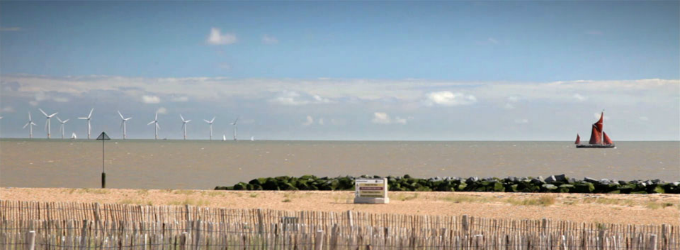 Rotten seascapes soak deep into British cinema, from films such as Lindsay Anderson’s O DREAMLAND to Pawel Pawlikowski’s LAST RESORT. Following on in this tradition, artists and filmmakers Karen Guthrie and Nina Pope gaze at the crumbling pleasure-grounds in JAYWICK ESCAPES, a study of some of the characters they meet in Jaywick, and of the town in general. As with their previous documentary, BATA-VILLE: WE ARE NOT AFRAID OF THE FUTURE, Guthrie and Pope explore the human heritage of the dreams of former generations.
Rotten seascapes soak deep into British cinema, from films such as Lindsay Anderson’s O DREAMLAND to Pawel Pawlikowski’s LAST RESORT. Following on in this tradition, artists and filmmakers Karen Guthrie and Nina Pope gaze at the crumbling pleasure-grounds in JAYWICK ESCAPES, a study of some of the characters they meet in Jaywick, and of the town in general. As with their previous documentary, BATA-VILLE: WE ARE NOT AFRAID OF THE FUTURE, Guthrie and Pope explore the human heritage of the dreams of former generations.
Declared as the UK’s most deprived community in 2011, the Essex seaside town could be paradise but instead it has a reputation as a sink estate with candy-floss. Built as a holiday resort in the 1930s, many of Jaywick’s houses are former beach huts since expanded with sub-standard sanitation. As we get to know Nick, John, Sara and Mac, we discover broken souls with optimistic aims all washed up on the beach. Yet, counter-posed with this are jolly hordes of manic pensioners who also live in Jaywick, selling cakes, dancing and living life to the full.
Following the World Premiere of JAYWICK ESCAPES at the Sheffield Doc/Fest 2012, we spoke to co-director Karen Guthrie. Additional material is supplied from the Q&A following one of the film’s screenings at the festival.
David Perilli: How did you discover Jaywick?
Karen Guthrie: A friend of ours was working across Essex and she said to us, ‘You’ll really love Jaywick, you should come and see it’. We went to see it and like a lot of artists found it visually incredible. The built environment was really interesting, with this DIY aesthetic. Our Bata film [BATA-VILLE: WE ARE NOT AFRAID OF THE FUTURE], to a degree, is about architecture.
Then our creative company, Somewhere, was invited by Essex County Council to do a consultancy, coming up with ideas to get the local community to engage in cultural ideas, specifically around the green space in Jaywick. The green spaces and the built environment weren’t appreciated or used by local people. Within this broad spectrum of regeneration we were invited to spend much longer in that village than we would have as normal film researchers. We did an exhibition at the tower there, we did things like flower arranging; a really strange array of activities which got us to know the positive people, the people who were positive about Jaywick much more than the other people, the people who were in our film.
Then we realised that the best way to keep working here, if we cared about this place, was probably not to keep working on consultancies or working in partnership with the agencies. Many people in Jaywick hate the council and all those agencies present who have let them down. So we thought we’re going to film here independently. We’re going to shine a light on the place in a way that we think will probably be more effective than working in the regeneration context. We changed our side of tracks.
DP: How many characters did you follow initially?
KG: Probably about six, and four make it into the film.
DP: How did you select the characters for your film?
KG: We had met a few of the characters who we filmed a lot before we got the camera out but in some instances people in Jaywick can be remarkably open and friendly without very much introduction. So when you see John hanging around with his hood and he goes ‘hello, my girlfriend’s just missed her period’. That was literally the first sentence he said to us apart from ‘hi’. He was remarkably interested to meet some people who were interested in him.
I think there’s really something quite magical about a character that’s on that cusp of adulthood.
Someone like Nick we met eating a fried breakfast at the only café in Jaywick on his own one afternoon. He looked like a poor man’s Gene Kelly with his hat and smile. We thought that, ‘this guy’s going to be in the film’, but he took a bit of convincing.
Mac was just a local paper-boy who we spotted. We thought that he looked interesting and different from the other kids in Jaywick. One of the problems with working with kids and young people in Jaywick is that it seemed that more often than not they were not living with their parents. So you have a lot of issues of even speaking to the kids because you have to find their guardians. I think there’s really something quite magical about a character that’s on that cusp of adulthood. The only person that makes you think that maybe he’ll get out and that he’ll be okay is Mac. He’s quite an important symbol for the film, for optimism.
DP: Do you feel you were lucky with the characters you chose to follow?
KG: I could make a film about Jaywick every single week. It’s so exciting. There’s a story like the one we show happening right now in Jaywick five times over. I don’t think we were lucky. I think we spent long enough filming there to know what we needed to do was to get into the houses. Which required a big intimacy to do that. These houses are minute. They are in terrible states of repair. People don’t look after them. So to get inside a house with your camera feels like a big privilege.
DP: Was there any anger from the people who lived there?
KG: No, very little, I mean amazingly little. Once the people believed that we weren’t working for the news doing some report on arson or something like that, once they knew and believed that, we were very accepted and protected to a degree by our gender. There’s this sort of East End gentlemanly ‘no one touches these girls’ spirit. We were really only very rarely even uncomfortable. People would just sort of just shout and lark about a bit. That was the worst that would happen. People would just act in front of the camera and you’d think ‘oh no I can’t use this now because this girl was shouting at me with a can of lager’.
DP: How does the sea figure in the lives on the residents of Jaywick?
KG: It’s weird in Jaywick because everyone talks about the beach being amazing. It’s one of the reasons they came there. But if you go there even on a really hot summer’s day there’s, like, two people and a dog on it. It’s an iconic thing to live near the sea. It’s like you’ve arrived in life if you’ve got a house near the seaside, your own gaff. So they don’t need to do it. They don’t need to actually go onto the beach and experience it, play on it, lie on it, swim in it. It’s a place which defines Jaywick but no one uses it.
You stay in there, you watch television, you take drugs, you think about your past. That’s what you see in the film.
It’s a domestic world there, you stay in your tiny little hut a metre-and-half from your neighbours and it’s all yours, the limitations of your existence most of the time. You don’t go out much. You stay in there, you watch television, you take drugs, you think about your past. That’s what you see in the film. There’s actually very little action in Jaywick, incredibly few activities apart from for the old people. Everyone young just stays in and hunkers down on their sofa.
DP: You have a great scene where all this old people are dancing together which contrasts with the malaise of the main characters. How did that come about?
KG: We knew that we wanted to demonstrate the complete social cohesion of the old people in some way in contrast to the younger people who are living these chaotic solitary if rather similar lives at times. So we knew we had to shoot a lot of that kind of community activity that the old people were doing. We ended up realising that we needed to demonstrate that older life visually. It was a scene that was put together in the edit realising that we had this amazing comparison between John, almost physically deteriorating as he walks along the beach looking ten years older, and little Mac, for whom it’s not happening, and we had this beautiful scene we could put together in a really visual way. It’s a delight when you find something like that in your material.
You realise that they are probably the last generation who are going to feel like that about their old age, feeling safe and warm with these people who feel the same way and have the same values. There’s something rather smug about a lot of the older people in Jaywick. As Sara says in that scene in her house, they look down on us. And yet we’ve moved to this ‘shit-hole’, those were her words. And she’s right. Most people who are older in Jaywick also moved there. They’re from the East End, so there’s no need to feel like the young people are from planet Mars but there is a sense that they are from another planet. You’ve got these particular young people who just can’t get out of bed. They can’t get out the house. You can say, ‘shame on them’, but the truth is you need help in that situation.
JAYWICK ESCAPES will be touring film festivals in 2012 and 2013 and will be available on DVD and to download later in 2012. An excerpt from the film and installation will show at the Science Museum from July 2012. For more information visit, www.jaywickescapes.com.

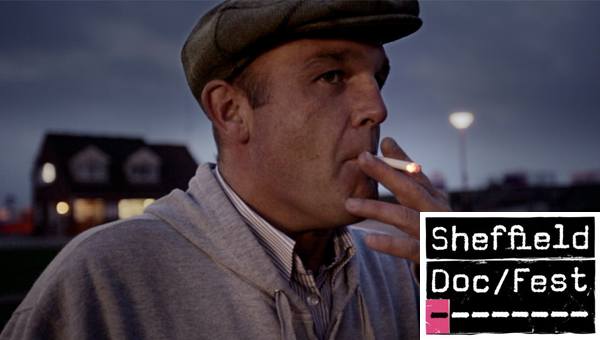
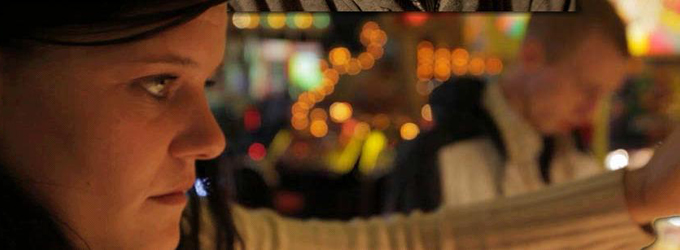
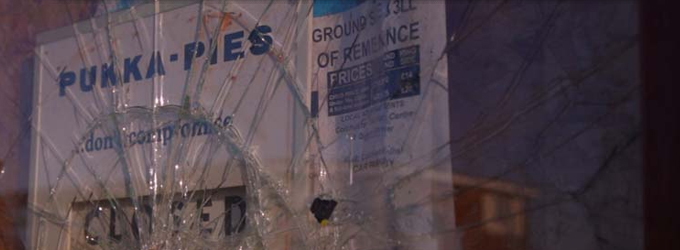
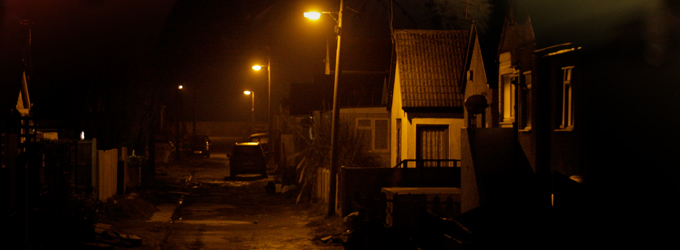
When will the dvd be available please.